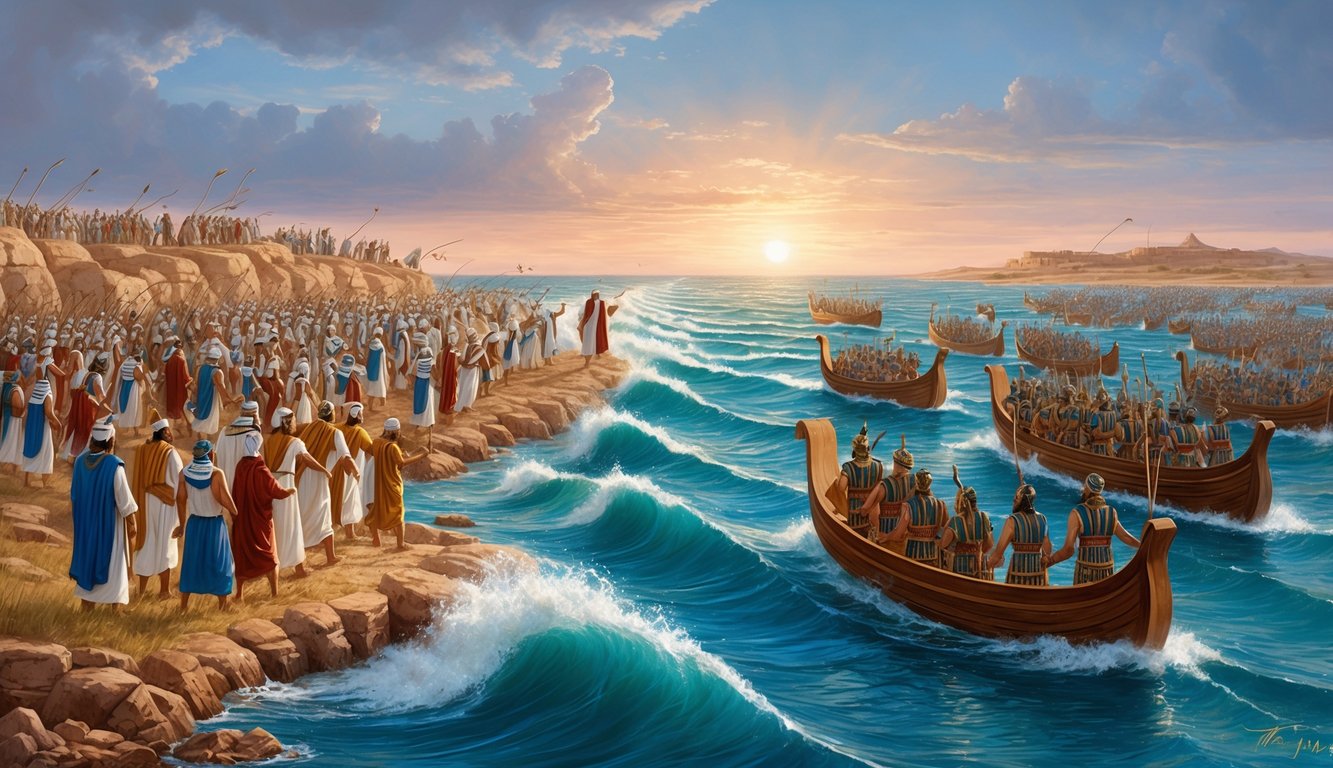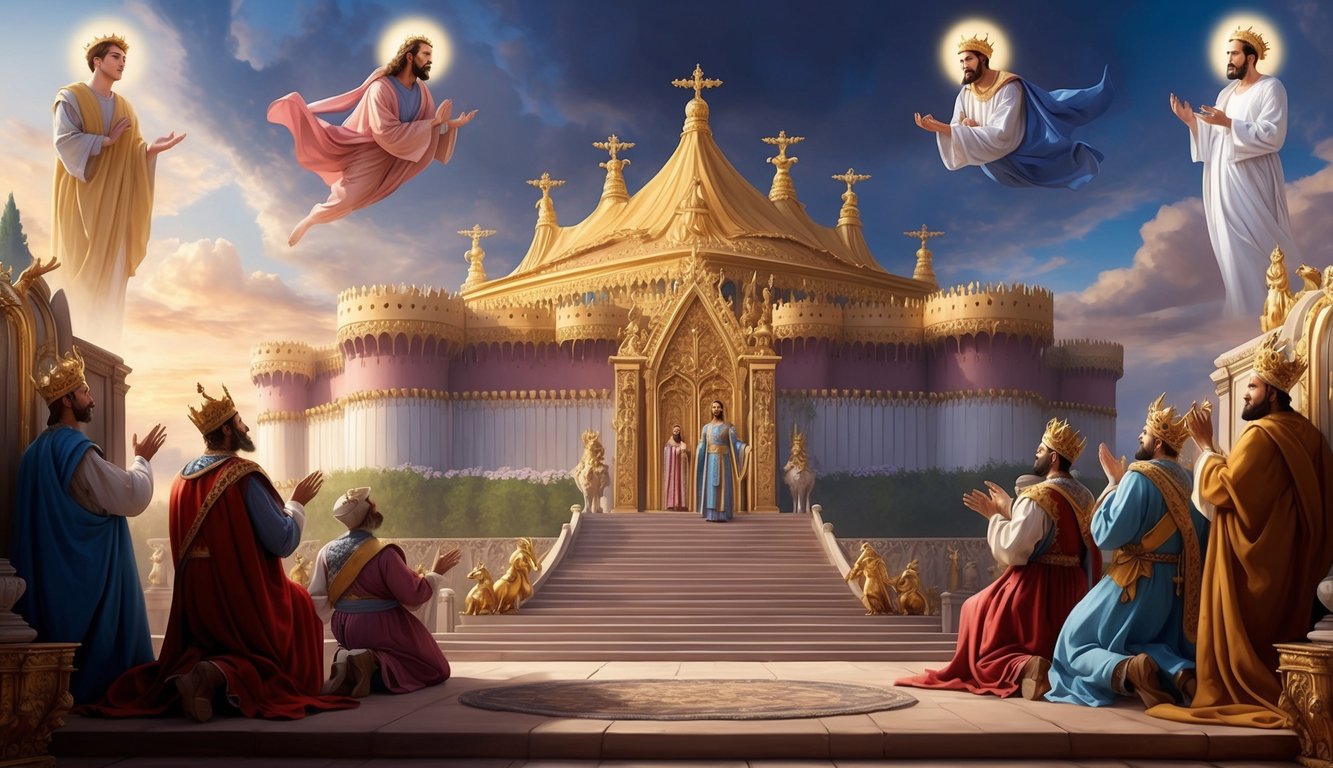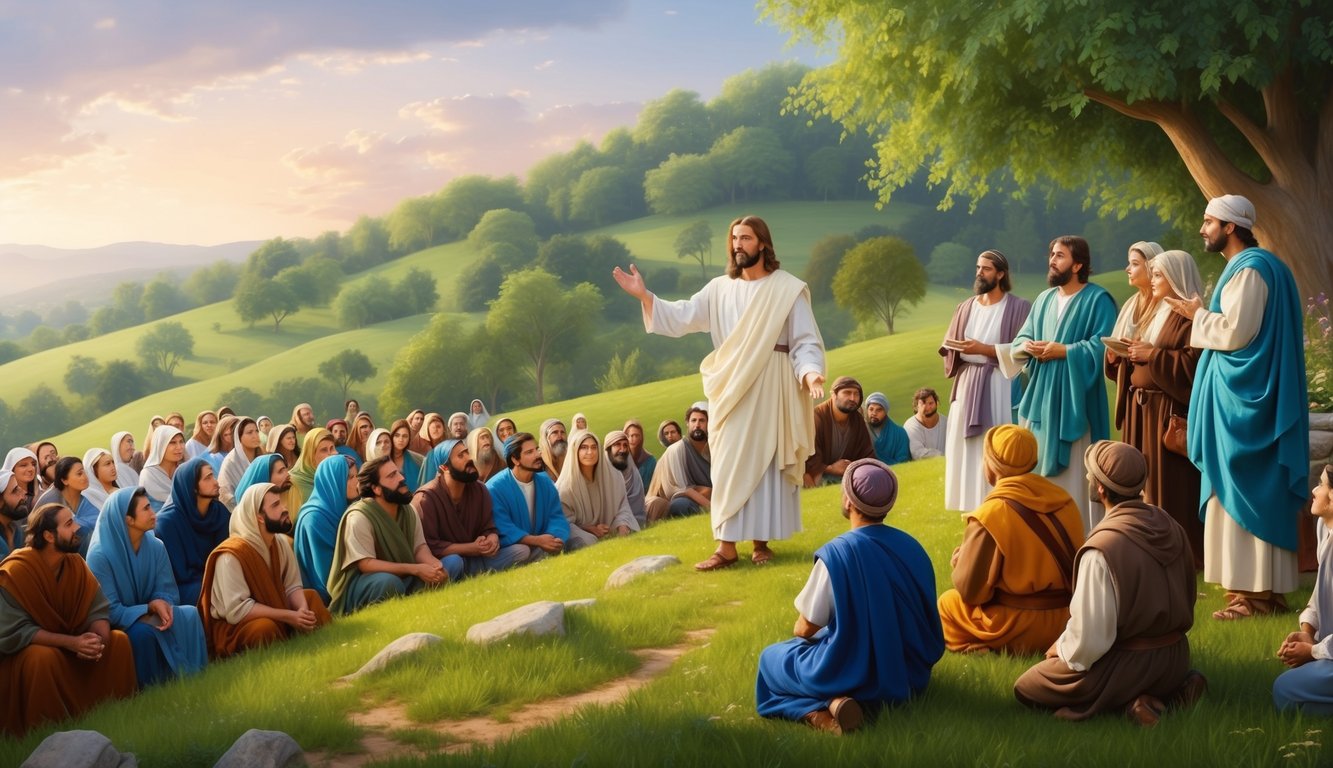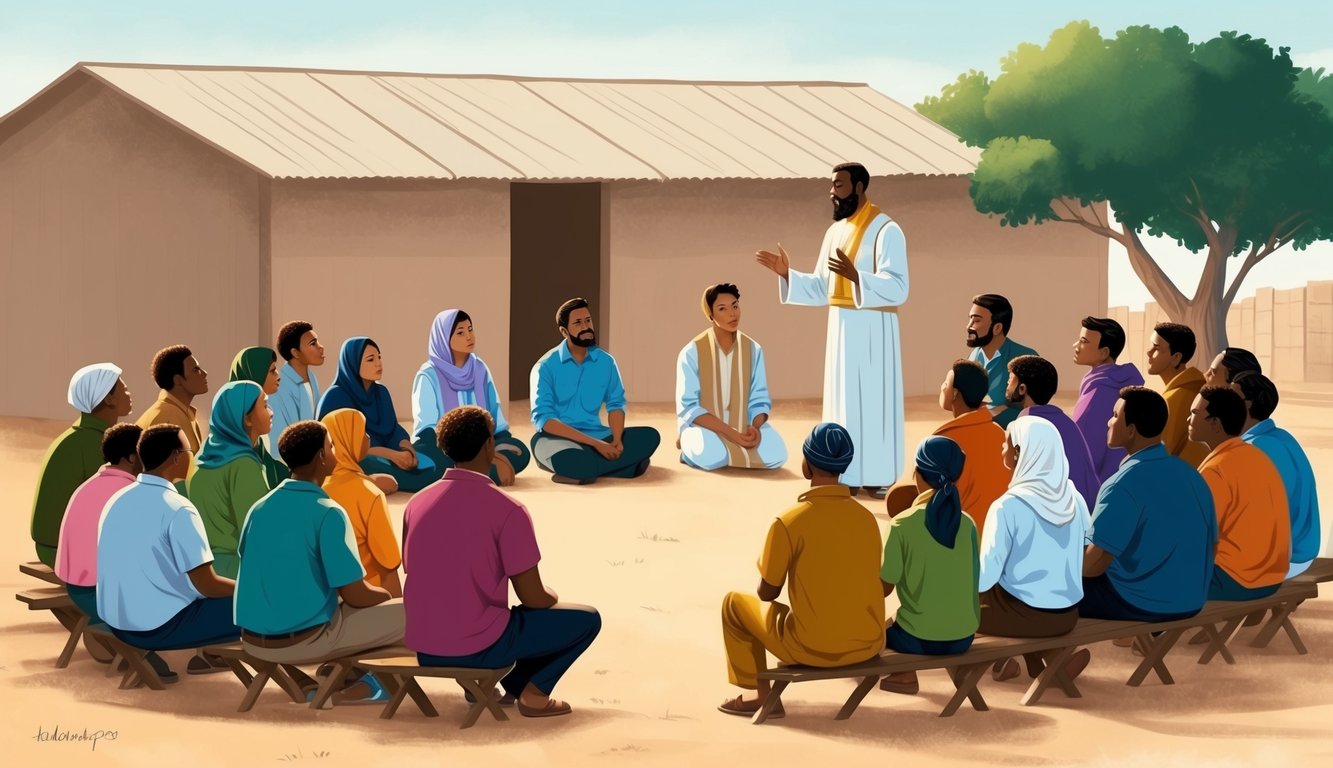Don’t Miss Out On This Unique Astrological Opportunity
Are you tired of spinning your wheels and getting nowhere? Simply put, you’re out of sync: you’re out of alignment with your astral configuration.
But: there’s a kind of map that can help you reclaim your alignment. Think of it as your own personal blueprint to success and happiness: a blueprint that will help you live your most amazing life.
Get started here.
Stories from the Bible are more than just tales from ancient times; they offer insights and lessons that still matter today.
Whether you’re familiar with them or just curious, exploring these stories can deepen your connection with the messages they hold. Discovering Bible stories allows you to uncover the rich history of scripture and reflect on its relevance to your life.
As you dive into these stories, you’ll find characters that face challenges, show courage, and make choices that reveal human nature.
The timeless narratives are not just about the past but are a bridge to understanding human experience across ages.
Reflecting on these tales can offer answers to life’s big questions and guide you in your personal journey.
If you’re interested in learning more about how the Bible’s narrative has evolved, you might find it intriguing that Misquoting Jesus: The story behind who changed the Bible and why discusses how some beloved stories emerged and why they were changed.
This deeper look into scripture can enrich your appreciation and broaden your perspective on what these stories mean for you today.
Creation and Early Humanity
The beginning of the Bible tells the story of how God created the world and the first humans.
It explores themes of creation, fall, and the early events leading up to the flood and the tower of Babel.
You’ll encounter key figures like Adam, Eve, Cain, Abel, Noah, and the events in the Garden of Eden.
The Genesis Narrative
In the Book of Genesis, the Bible describes how God created the world in six days.
Each day introduced something new, like light, plants, and animals.
On the sixth day, humans were made.
The first humans were Adam and Eve.
They were created in God’s image and given the responsibility to care for the garden.
God provided them everything they needed in the Garden of Eden.
The Bible narrates the cosmic and peaceful beginning before leading to the challenges humanity would face.
Following creation, the story begins to hint at human imperfections and the struggles that came from them.
Adam and Eve in the Garden of Eden
Adam and Eve lived in the Garden of Eden, a beautiful and lush paradise filled with all kinds of plants and animals.
They had harmony with God and each other.
They were free to do anything except eat from the tree of the knowledge of good and evil.
Temptation entered the garden through the serpent.
Eve, followed by Adam, chose to eat the forbidden fruit.
This act marked the fall of humanity, introducing sin and mortality into the world.
This began a series of events that included Cain and Abel’s story, leading to Noah’s flood and eventually the Tower of Babel.
Patriarchs and Matriarchs
In these stories, you’ll explore key figures like Abraham, Isaac, Rebekah, Jacob, and Joseph.
These narratives highlight themes of trust, God’s plan, and judgment, revealing important lessons within the Bible.
The Covenant with Abraham
Abraham is a central figure in the Bible, known for his deep faith and trust in God’s promises.
God made a covenant with him, promising that Abraham would become the father of a great nation.
This required immense faith, especially since Abraham and his wife, Sarah, were childless for many years.
Despite their old age, they were blessed with a son, Isaac, showing that God fulfills promises.
It also demonstrates the significance of trusting in God’s plan even when circumstances seem unlikely.
Abraham’s story inspires you to believe in divine promises and remain faithful regardless of uncertainties.
Isaac and Rebekah: Continuing the Promise
Isaac, the son of Abraham and Sarah, continued the covenant.
His story with Rebekah focuses on selecting a suitable partner to fulfill God’s promises.
Abraham’s servant was sent to find a wife for Isaac, guided by God to choose Rebekah.
This marriage emphasized the importance of divine guidance in matters of the heart.
Isaac and Rebekah had twin sons, Esau and Jacob, marking the continuation of God’s promise.
Their relationship reflects trust in God’s plan and highlights the role of family in carrying out divine intentions.
It teaches you about letting faith guide personal decisions.
Jacob’s Ladder and His Twelve Sons
Jacob, later named Israel, is another key patriarch in the Bible.
His dream of a ladder reaching to heaven symbolizes the connection between God and humanity.
This dream reinforced God’s promise to bless his descendants.
Jacob fathered twelve sons, who became the leaders of the twelve tribes of Israel.
Jacob’s journey is filled with both triumphs and challenges, showcasing decisions shaped by trust in God’s plan.
Through his story, you can learn about perseverance, faith, and the importance of family in God’s promises.
Jacob’s experiences also reflect how people can grow and change over time.
Joseph’s Triumph and Trials
Joseph, one of Jacob’s twelve sons, faced many challenges, including being sold into slavery by his brothers.
Despite such trials, he rose to a position of power in Egypt because of his trust in God.
His interpretation of dreams for Pharaoh demonstrated God’s plan and led to provisions during a severe famine.
Joseph’s story is about resilience and forgiveness.
Despite his brothers’ betrayal, Joseph showed compassion and forgave them, emphasizing the importance of mercy.
Joseph’s life illustrates how God can turn difficult situations into opportunities for growth and helping others.
You can find inspiration in his journey to remain faithful and forgiving, no matter the circumstances.
Exodus and Law

In the story of Exodus, Moses plays a key role in leading the Israelites out of Egypt and receiving the laws known as the Ten Commandments.
These events are pivotal in understanding the relationship between divine laws and the journey of the Israelites.
Moses and the Burning Bush
The story begins with Moses encountering God in the form of a burning bush.
This miraculous event occurs while Moses is tending to sheep near Mount Horeb.
Despite the fire, the bush remains unburnt, signifying a divine presence.
God speaks to Moses from the bush, instructing him to lead the Israelites out of slavery in Egypt.
God reveals His name as “I AM,” showing His eternal presence.
This moment marks the beginning of Moses’s mission.
Moses is hesitant at first, but God reassures him with signs and promises.
The burning bush marks a transformation, setting Moses on the path to lead his people to freedom.
This story highlights the divine call and the beginning of Israel’s liberation.
Ten Plagues and the Escape from Egypt
The Ten Plagues are a series of calamities inflicted upon Egypt to compel Pharaoh to release the Israelites.
Each plague demonstrates God’s power over the Egyptian gods and Pharaoh’s resistance.
The plagues include events like turning water into blood, swarms of locusts, and darkness covering the land.
The final plague, the death of the firstborn, is the most severe.
It leads to the institution of Passover, a significant Jewish tradition.
After this last plague, Pharaoh relents, allowing the Israelites to leave.
As they escape, they encounter the Red Sea.
With God’s guidance, Moses parts the sea, allowing safe passage.
The story of the plagues and crossing the Red Sea underlines God’s protection and the dramatic rescue of His people.
Receiving the Ten Commandments
After escaping Egypt, Moses leads the people to Mount Sinai, where he receives the Ten Commandments.
These laws form the basis of moral and religious behavior for the Israelites.
The commandments include instructions such as worshiping God alone, honoring parents, and prohibitions against stealing and lying.
The commandments are given amidst dramatic scenes of thunder and lightning, emphasizing their importance.
Moses acts as the mediator between God and the people.
The Ten Commandments are not just rules but a covenant that reinforces the relationship between God and the Israelites.
These laws later influence many other legal systems, highlighting their enduring significance.
Royal Kingdom and Prophets

The stories of the Royal Kingdom and Prophets are rich with tales of powerful kings and the wise prophets who guided them.
Key figures include King David, known for his challenges and achievements, and Solomon, famed for his wisdom and the construction of the First Temple.
Prophets like Isaiah and Jeremiah voiced counsel during times of change and turmoil.
King David’s Reign and Challenges
King David is a central figure in biblical history, known for his leadership and complex personality.
His encounter with Goliath marked the beginning of his rise to prominence.
As king, David united the tribes of Israel and established Jerusalem as the political and spiritual center.
Despite his successes, David faced numerous challenges, including opposition from Saul and internal family strife.
David’s reign set the stage for future prosperity but was not without its mistakes.
The story of Bathsheba highlights his human flaws and the consequences of his actions.
David’s relationship with God remained a significant part of his legacy, influencing later religious thought and governance.
His story offers insights into leadership and the balance between power and humility.
Solomon’s Wisdom and the First Temple
Solomon, the son of David, is celebrated for his wisdom and the monumental achievement of building the First Temple in Jerusalem.
This temple became the center of Israelite worship and a symbol of the nation’s faith and connection to God.
Solomon’s rule is characterized by peace, prosperity, and the famous story of how he resolved the dispute between two women claiming to be the mother of a child.
Key aspects of Solomon’s reign:
- Construction of the First Temple
- Renowned wisdom and justice
Solomon’s later years saw a decline in adherence to religious ideals, leading to tensions and division.
His relationships with other nations brought wealth but also introduced foreign influences that challenged Israel’s traditions.
This complex legacy offers lessons on maintaining faith and cultural integrity amidst prosperity.
Voices of the Prophets Isaiah and Jeremiah
Prophets Isaiah and Jeremiah played crucial roles in guiding the Kingdom of Judah during turbulent times.
Isaiah is known for his messages of hope and visions of a future where peace and justice prevail.
He provided counsel to the kings and warned against alliances that would compromise their faith.
His prophecies continue to be integral to Christian and Jewish traditions.
Jeremiah’s prophecies were often dire, warning of the consequences of turning away from God.
He witnessed the fall of Jerusalem and the exile to Babylon, urging the people to remain faithful.
Themes in Jeremiah’s messages:
- Repentance and renewal
- Hope amidst destruction
These prophets emphasized the importance of spiritual devotion and the consequences of ignoring divine guidance.
Their words remain relevant, offering timeless insights into faith and resilience in difficult times.
Life and Teachings of Jesus

In this section, you will explore the story of Jesus, a central figure in Christianity, focusing on his birth, teachings through parables and miracles, the events leading to his crucifixion, and the accounts of his resurrection.
Jesus’s life is a significant part of the New Testament and has influenced countless disciples and followers throughout history.
The Birth and Early Life of Jesus
Mary, a young woman living in Nazareth, gave birth to Jesus under humble circumstances.
The Gospels describe his birth as a miraculous event announced by angels.
According to the New Testament, this took place in Bethlehem, fulfilling ancient prophecies.
His early life is documented in the Gospels, including the visit of the Magi and his family’s escape to Egypt.
These stories set the stage for his mission.
At the age of twelve, Jesus amazed scholars in the temple with his wisdom, hinting at his future role as a teacher and prophet.
Parables and Miracles
Jesus is known for his ability to teach through parables—simple stories with deep meanings.
These include tales like the Good Samaritan and the Prodigal Son.
Parables made complex spiritual lessons accessible to everyone.
In addition to parables, Jesus performed many miracles, which demonstrated his power and compassion.
These acts included healing the sick, feeding thousands with minimal food, and even raising the dead.
Miracles like walking on water and calming storms showed his mastery over natural and spiritual realms.
His teachings inspired many to follow him as disciples.
The Path to Crucifixion
The events leading to Jesus’s crucifixion are pivotal in Christian teachings.
Jesus gathered his disciples for the Last Supper, where he foretold his betrayal.
This moment is commemorated by Christians as a symbol of his sacrifice and a reminder of the new covenant.
After the Last Supper, Jesus prayed in Gethsemane, where he was arrested.
He was tried and sentenced to death by crucifixion.
The Gospels describe his suffering on the cross, highlighting his forgiveness of those who persecuted him.
The crucifixion is seen as a demonstration of his love and redemption for humanity.
The Resurrection Account
After his crucifixion, Jesus was buried in a sealed tomb.
The resurrection account begins three days later, when women disciples found the tomb empty.
Angels announced that Jesus had risen, a fundamental belief in Christianity.
Following his resurrection, Jesus appeared to his disciples, reinforcing his teachings and proving his victory over death.
The Gospels describe his ascension into heaven, where he continues to guide believers.
The resurrection is a cornerstone of the Christian faith, symbolizing hope and the promise of eternal life.
The Early Church

In the early days of Christianity, the church faced both rapid growth and numerous challenges.
Key figures like Peter and Paul played significant roles, spreading the teachings of Jesus.
Events such as Pentecost greatly impacted the church’s development.
The Acts of the Apostles
The book of Acts describes how the early followers of Jesus spread his message after his resurrection.
Peter emerges as a pivotal leader, performing miracles and speaking about Jesus to both Jews and Gentiles.
Another key moment is the conversion of Cornelius, the first Gentile believer, highlighting the church’s expansion beyond Jewish communities.
Paul, originally a persecutor of Christians, becomes a dedicated apostle.
His missionary journeys take him across the Mediterranean, forming new churches and reaching diverse groups.
His travels include dramatic events, such as a shipwreck en route to Rome, which shows his commitment and resilience.
Growth and Challenges for Early Christians
In this period, the church grows despite facing many trials.
The Roman authorities often resist and persecute the believers.
The burning of Rome during Nero’s reign leads to increased hostility towards Christians.
Timothy, a close companion of Paul, helps guide congregations and addresses challenges like false teachings.
Early Christian communities work to establish practices and teachings that align with the revelations they have received.
The diversity in location and people means that they often have to adapt to different cultures and beliefs.
Rome becomes a central hub, where believers congregate, and the teachings are shared.
Despite the obstacles, the early church’s resilience ensures the spread of Christianity throughout the Roman Empire and beyond.



